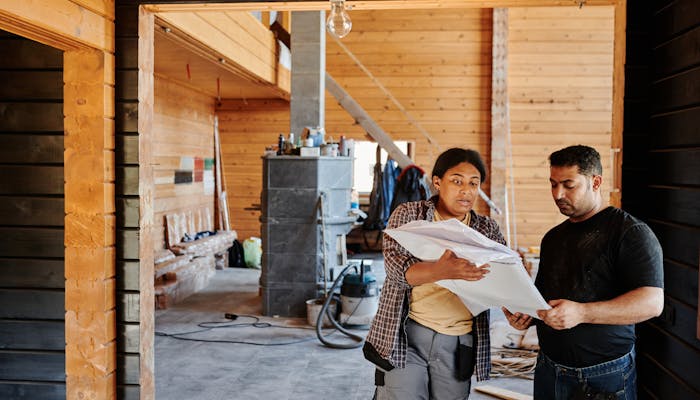
Renovating my home has always been an exhilarating experience. Transforming my living space boosts its beauty and functionality and enhances its market value. However, each demolition phase illuminates the considerable amount of construction waste it generates. If not managed properly, this waste poses a real threat to our environment.
As I’ve become more attuned to the ecological footprint of my renovations, I’ve shifted towards eco-friendly practices. Eco-friendly renovations are gaining traction among homeowners who are conscious of their impact on the planet. Among the critical components of sustainable renovations is effective roofing waste disposal – how to handle your project waste responsibly.
Understanding the Impact of Construction Waste
In my deep dive into construction and renovation, I’ve learned about the alarming levels of waste produced by these activities. It’s staggering to realize that construction and demolition waste accounts for the heaviest waste stream, comprising 25% to 30% of all waste in the EU. The figures from the Environmental Protection Agency (EPA) in the United States paint a similar picture, with about 600 million tons of construction and demolition debris recorded in 2018 alone. This amount is more than double that of municipal solid waste generated in the same year.
Navigating My Path to Sustainable Living: Effective Waste Management Strategies
Choosing Sustainable Materials
In my quest to reduce construction waste, selecting the right materials is crucial. I opt for affordable, non-toxic, and recyclable substrates. Metal roofs are a perfect example; they are fully recyclable and can last over 50 years, making them an excellent choice for roofing. I also explore sustainable shingles made from recycled rubber or plastic. These materials help divert waste from landfills and reduce the need for new raw materials.
Opting for Deconstruction Over Demolition
Whenever possible, I choose deconstruction instead of demolition. Deconstruction involves carefully dismantling structures to salvage components that can be reused or recycled. This approach significantly reduces the volume of waste sent to landfills. It redefines construction waste—beams, glass, tiles—as valuable resources, thus prolonging their lifecycle and minimizing environmental impact.
Proper Segregation of Waste
I prioritize sorting waste by material type to streamline the recycling process. Separating wood, metals, and concrete on the site makes it easier to recycle damaged goods efficiently. This method not only simplifies recycling but also prevents the contamination of recyclable materials with low-grade waste, enhancing the quality of the recycled commodities.
Utilizing Professional Waste Removal Services
To handle construction debris responsibly, I rely on professional waste removal services. These experts ensure disposal methods comply with government regulations and emphasize recycling whenever possible. For example, they expertly manage the bulk of hazardous roofing waste, which requires careful handling to maximize recycling opportunities.
Encouraging Sustainable Disposal Among Residents
While professional contractors manage most of the construction waste, we, as homeowners, play a crucial role in ensuring our renovations are environmentally friendly. By choosing contractors committed to sustainable practices, we make responsible decisions that effectively manage renovation waste. Moreover, we can support material salvage and recycling efforts, contributing to ecological conservation.
My approach to eco-friendly renovation includes selecting green materials, employing energy-efficient appliances, and adhering to waste management regulations prompted by ongoing construction activities. By adopting sustainable materials, utilizing deconstruction, sorting waste, and engaging qualified waste removal services, I significantly reduce the negative impact of renovations on our environment.
Together, step by step, we can contribute to a healthier planet. By setting an example in the building industry, we can establish new standards for responsible construction. The growing trend towards sustainable lifestyles and the essential knowledge and practices of proactive waste management are vital in our collective responsibility as stewards of the Earth.
Photo by Mikael Blomkvist on Pexels
Yes, you are right if we don’t manage our renovation waste it will become a big threat to our environment. We should take action and remove renovation waste to call the company.
Custom Kitchen Design Services in Los Angeles CA
Embracing eco-friendly renovations not only enhances homes but also protects the environment. From sustainable materials to proper waste management, each step contributes to a brighter, solar-powered future.
Responsibly disposing of waste from home renovations, including Cedar Roofing materials, is crucial for environmental sustainability. Firstly, sort materials diligently, separating recyclables like metal, wood, and plastics from non-recyclables. Many local waste management facilities offer recycling services for these materials. Next, consider reusing or repurposing salvageable items, such as cedar planks, for future projects or donating them to community organizations. For materials that cannot be recycled or reused, explore proper disposal options. Some municipalities provide specific guidelines for construction waste disposal, including designated drop-off locations or pickup services. Additionally, inquire about any hazardous waste, like paint or solvents, and follow appropriate disposal protocols to prevent environmental harm. By taking these steps, you can ensure that your home renovation waste, including cedar roofing, is disposed of responsibly, minimizing its impact on the environment.